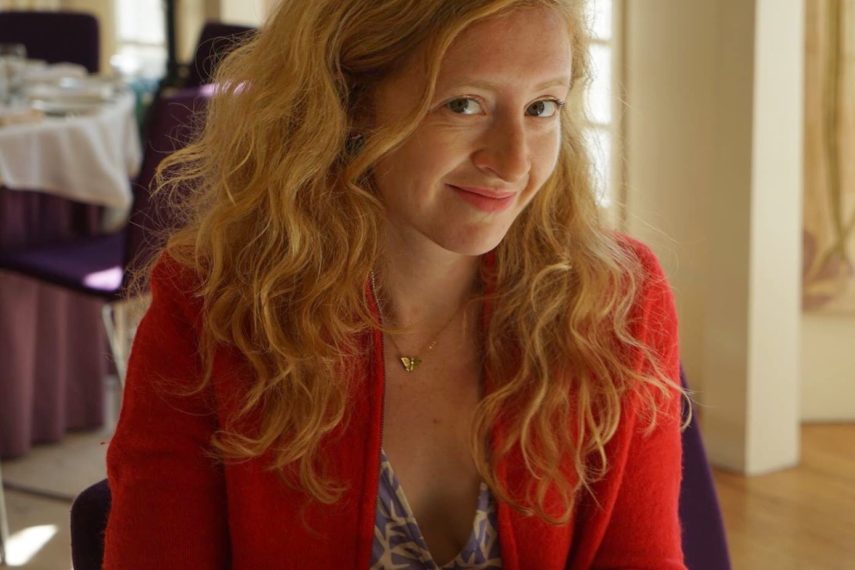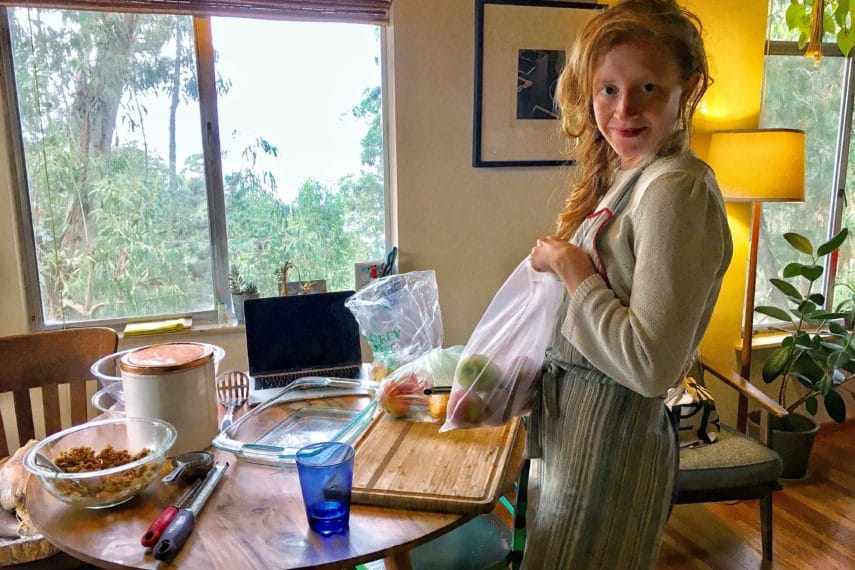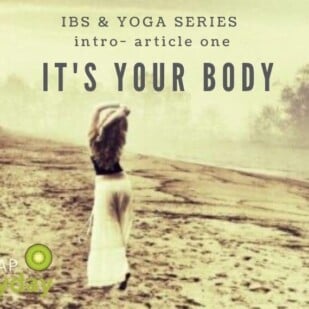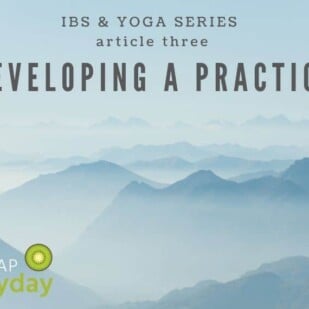Kiera is one our FODMAP Everyday® Success Team members, writing about the importance of mindfulness, meditation, body movement in the form of yoga, and body work in the form of shiatsu as it relates to gut health and overall wellbeing.
Kiera is one of our younger team members and brings an important perspective on tuning into your body – the earlier in life the better – but it’s never too soon or too late to begin the practices she writes about for FODMAP Everyday®. Kiera is a certified yoga instructor, a life-long dancer, and a certified and licensed Shiatsu practitioner. You can find out more about her services in her bio here.
Robin: Hi Kiera, thanks so much for sharing with us some of your thoughts about the topics you are and will be writing about for this website.
Kiera: Thanks for letting me contribute my thoughts! I’ll preface this by underlining your intro for me – that the following is just my experience, and that I am young and learning and fairly eager about it, so some of my statements may not feel as cautious as they might from a more mature standpoint – but I hope that my genuine love of and interest in bodywork comes across, and that it is, even in a small way, inspiring to those looking to get a bit more into their bodies.
Tell us a bit about your relationship to body movement and body energetics – when did this start for you?
I remember asking to start taking ballet classes around the age of 3 because I just thought it was so beautiful and magical. Around age 5, I actually started taking ballet classes, and pretty much since then, movement education has been part of my life…I’ve spent a lot of my lifetime in “body class.” It started with a fairly typical regimen of dance classes, and then I added yoga classes to the mix.
During college I was introduced to Contact Improv (CI), and the combination of CI and yoga lead me down the path of exploring the body as an emotional center, as a metaphor for human relationships, and of working with my body not only as a means of exercise and expression, but of assessing my own wellbeing and working through and understanding my emotional, psychological and spiritual self.
What are some of the tangible and intangible impacts on your own life of a regular body/mind practice?
Well, a good tangible impact is that I am actually not a very naturally flexible person, and it is only through a very regular and dedicated body movement practice that I have become very open and limber. Having flexible muscles and joints is one of the things that I believe keeps me healthy and structurally strong. The intangible side of that coin is that the (long, slow) process of getting there has given me a profound sense that I do have some power to change what I feel needs changing, with time and focus.
My practice also has given me a much greater understanding of how bodies in general function. The increased subtle awareness of tiny movements and adjustments in my own body has allowed me to work with other people in their bodies, and that gives me great joy and pleasure. I’m also quite good now at trouble shooting my own basic aches and pains, and working them out – like constipation or insomnia – I always turn to things in my practice to help alleviate those, and it works. Also during periods of depression or big sadness in my life, dance/CI and yoga were a large part of my pathways out of that – consistently coming back to my breath and to movement, I find it always brings back that connection to “heaven and earth energy,” simultaneously grounding and expansive.
What have some of the most influential experiences been that have led you to your choice of profession and study?
For a long time, after it became clear that I would not become a prima ballerina, I lost sight of incorporating body movement into my profession and it made me feel very dejected. I actually would spend time imagining myself growing older, working a sedentary job, and no longer having time to take dance classes, and watching my body become stiff and weak. I didn’t quite yet see a way for my love of movement and of understanding bodies to be a central part of my life.
When I started to branch out and get into somatics (the internal experience of movement, vs. the external appearance ie ballet) and eastern philosophies of health (Yoga, Ayurveda & TCM), every bit of it made sense to me, and my fascination has just kept increasing. I feel as though I’m discovering an entire universe of information contained inside my own body, and it’s the same for each and every person, and it’s just very cool. As for making it my profession, that is still a work in progress, but I’m trying to fill my days with what my body feels best doing, learning as much as I can, and having faith in the process.
You work one on one with yoga and now shiatsu clients – can you speak a bit to what that experience is like? What do you like about working one on one? Are there common experiences that your clients have with engaging in a yoga or shiatsu session? Can you describe some “ah ha” moments your clients have experienced as a result of undertaking a regular practice such as yoga, meditation or shiatsu?
Working one on one with people in this context is always interesting, fun and makes me feel very grateful to be let in to that part of a client’s life. It can be a vulnerable and very personal space to be one on one working with the body – it’s not something most of us have to do very often and our internal experience of our bodies is actually rarely something we talk about.
One common experience I find among clients is a tendency to dismiss or wave away their own observations about their bodies. A sentence like “well I’ve had this funny soreness under my shoulder blade for a while…but it’s probably nothing / I’m sure everyone does” is pretty common. Both asana practice (yoga) and shiatsu come from traditions that work from a perspective of maintaining health (as opposed to curing sickness) and therefore rely on continuing awareness of subtle bodily and emotional complaints or disturbances to cue a person in to where they might be out of balance, and what to do to regain balance.
Maybe it’s a change in diet, in relationship, additional or alternate form of exercise, finding a therapist, meditating, getting a massage etc, but starting simply with believing that your observations about your body are real – even small insignificant aches and pains – is useful and interesting information about where you’re at. This often leads right into a kind of “A-Ha” moment – that those observations are not meaningless, and that they can give you some pretty tangible info about your state of health.
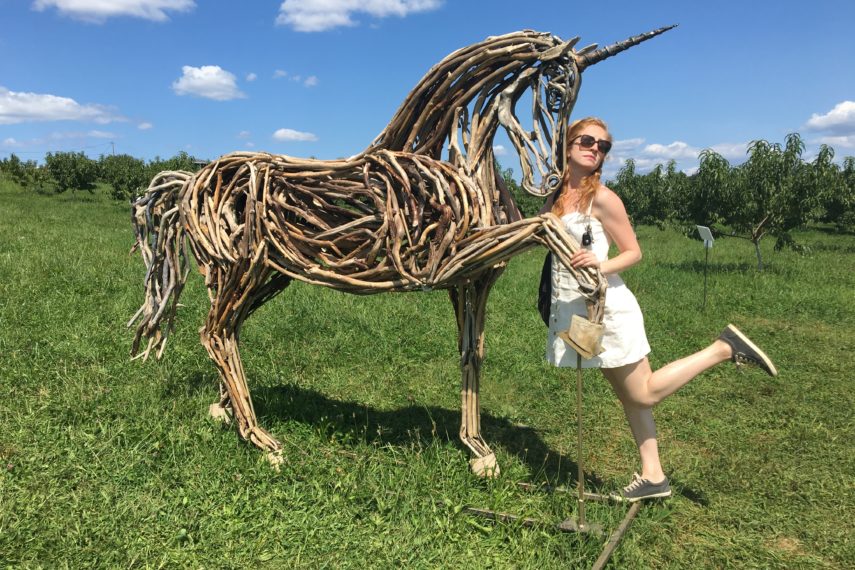
Those are sort of “intangibles” on some level. But It’s a big question, with many answers, but I’ll touch on two more things I find common for people new to yoga or a daily movement practice. Firstly, there is often apprehension in setting up a posture-based practice around “doing the pose right” and “remembering the moves/sequence” – that makes sense and will change with familiarity, repetition, and time.
It took me about three years of dedicated practicing to develop real confidence in my practice. There’s a lot going on in every yoga posture / movement sequence, and it takes a long time, and patience, to feel like you can troubleshoot your own places of stuckness. A helpful thing I find is to look at a posture as a layered puzzle. First, maybe there is the basic structural shape (left foot forward, knee bent, etc), then there are the muscular actions (rotations, extensions etc), then there is the breath, then moving into the subtle body, and the emotional body…etc. All super interesting places to work – so, start with the simplest structure of the pose and see what you notice, where there is sensation, if it is an open pose or a closed pose, stable or playing with balance.
The second thing is that we are often warned against injury but still feel compelled to do the poses “fully” for one reason or another. I can’t tell you how many times I’ve seen a person completely stop breathing and start straining in order to get their leg someplace crazy (for them). In my experience, injuries tend to occur when you aren’t actually listening to what your body is saying (easy to do!), but listening to what your mind is saying.
Listening isn’t only hearing (through ears) though sometimes that is predominant in our world, and that which we hear often comes in the form of speech and so enters the mind. Sensation enters the body through movement/lack of movement, and is absorbed by the skin, muscles, bones, nerves etc, so it is “heard” through motion and stillness.
So, for example, in a class, you may see the posture the teacher is demonstrating and hear the instruction to move in a certain way, and your body may be telling you that it shouldn’t be doing that – and we are so accustomed to listening to our minds, that we often push through the body’s warning, and that’s often when injury occurs. To begin to make that switch, listen to your breath – you can hear it and you can “hear” it (feel it) with your body. Your body is smart, and smart things avoid injury – try to listen to your body to help avoid injury.
Do you have some thoughts you could share about how best to begin a new body/mind practice if one has never done so? And how to overcome the natural tendency so many of us has in failing to keep up with a practice?
Lately I’ve been really into the idea that if it feels good, I practice it. So, maybe start there if you find it challenging to just make yourself do a thing everyday. If you get up in the morning and have 10 minutes to wait for the coffee to brew or tea water to boil, roll your wrists around and your ankles, circle your hips and rub down your arms and legs – it feels good so it’s not that hard to get yourself to do – and it will lubricate your joints, wake up your skin, get out some of the sleeping kinks – and let you know where your body’s at that day (sore, tired, stiff, alert, limber, energetic).
If you go to a class and enjoy the way some of the moves feel, try them at home. Experimentation and play will go a long way in developing familiarity with your own body. And that’s really the goal, in my mind, of a basic daily practice – to check in with your state of being, and drop down into your body. Sitting and breathing is also a good place to start, counting breaths up to 10 and then back to 1. One thing I like to do is to go through and move each joint in every way it can move, which usually leads to other questions, and other experiments. From there, a whole world of information will start to take shape, and that’s where the real fun of a practice begins.
For the overcoming…very tricky. There is so much competing for our time and attention. Overcoming the “not doing” is really hard, and in my experience, one thing that can really help is a thoughtful investigation of your priorities. We all have 24 hours to work with each day, and our priorities generally determine what fill those hours. If a daily practice is new, and therefore without an established place on your list of priorities, it’ll likely get passed over for something that is. Figure out how important doing your practice really is to you in relation to the other things that fill your time.
If you are new and serious about having a practice, let it be a top priority for a while, and if you are comfortable, tell other people that it’s a priority for you. I find that just setting that intention will increase the likelihood that you will choose it over going out for a beer, or talking on the phone, watching TV etc. Other tricks…set an alarm, set goals (10 inversions a week…), do it with a friend and check in. I think you’ll find, once it’s established, it’ll propel itself because it feels good, and you feel good, and it just keeps feeling better and better and getting more and more interesting.
Some people feel that yoga/meditation and energy meridian work isn’t for them – that it’s too new age and not something they feel they could relate to. What can you offer to help someone better understand how this may become a valuable tool for self-care?
If you aren’t interested in the spiritual/emotional work that comes with a lot of body-oriented practices, then just simply leave it out – start with the purely physical/mechanical, the tangible and the apparent, because actually, that is what all of this is based in and how it all has been developed – it’s just that the tangible and the apparent become more subtle and energy-based the more you learn about them and learn how to work with them (just like anything else – first you learn the basics, the structure, and then you learn the nuances, exceptions, subtleties etc.)
So I actually think it’s a great and honest way to start – no need to go into the energy work side of things until the energy work reveals itself to you. Just start with your body, with movement, stillness, breath, and curiosity, with shapes and colors and textures and questions. Take it all in and know that it’s yours to explore!
Thank you Kiera! I feel I learned alot about how to begin to listen to my body and learn to trust what it has to say. Very powerful guidance and encouragement.
Direct Links to “It’s Your Body!” Series Articles
(more added as they appear- click on article title below for link)
-
ARTICLE 1: IBS and Yoga Series Intro: It’s Your Body
-
ARTICLE 2: It’s Your Body!: Where to Begin?
-
ARTICLE 3: Developing a Practice
-
ARTICLE 4: Kitchen Yoga
-
ARTICLE 5: Identifying Habits
-
ARTICLE 6: Activating and Applying Your Self Knowledge
